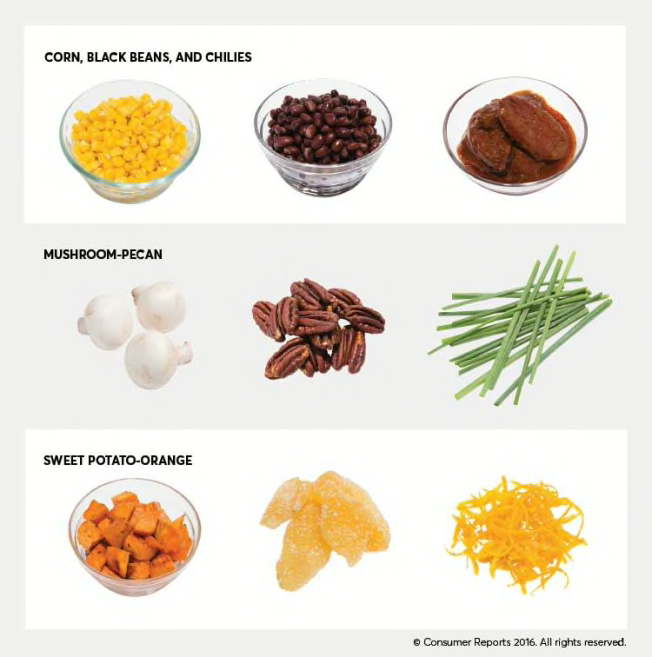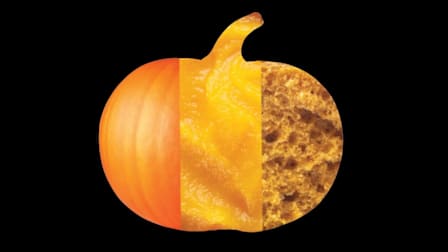How to Make Stuffing Tastier and Healthier
Use these tips to slash fat and sodium while adding fiber and flavor
When you shop through retailer links on our site, we may earn affiliate commissions. 100% of the fees we collect are used to support our nonprofit mission. Learn more.

Stuffing, or dressing as it is called in some parts of the South, is synonymous with the Thanksgiving holiday. It ranks as the No. 1 favorite side dish among people in 42 states, according to a survey [PDF] of 5,000 Americans conducted by Campbell’s.
But in the time-crunched frenzy of putting together a holiday feast, preparing made-from-scratch stuffing may feel like one task too many. Fortunately, there are ways to dress up packaged stuffing and boost its nutritional value.
What Makes a Good Stuffing?
“Flavor matters, but texture is a big part of what stuffing is all about,” says Amy Keating, RD, a Consumer Reports nutritionist. “It should be uniformly moist and soft, not mushy or soggy, with pieces that hold their shape rather than break down into a pastelike consistency.”
Nutrition Notes
Stuffing is essentially bread, salt, and butter, so it probably comes as no surprise that it isn’t the healthiest food served on Thanksgiving. But you can cut its sodium and saturated fat, and pump up its nutritional profile.
Most packaged stuffings contain a significant amount of sodium, so you don’t need to add more salt to the dish. “Use unsalted butter and a lower-sodium broth or stock to moisten the stuffing. It won’t affect the flavor, but it can put a real dent in the sodium content,” Keating says.
Stock tends to have less sodium than broth because it’s often used as a base in recipes that call for added seasoning, making it perfect for stuffing. For example, 1 cup of Swanson Chicken Stock has 510 mg of sodium compared with 860 mg per cup in Swanson Chicken Broth. To reduce sodium even further, you could use an unsalted version, especially if your stuffing contains a lot of herbs and spices.
To trim saturated fat, consider using less butter than the recipe calls for or switching to olive oil or a lower-fat, vegetable oil-based spread.
Adding plenty of chopped vegetables—onions, carrots, and celery—or even fruit like apples or pears will stretch the stuffing and lower the calorie, fat, and sodium content per serving.
And keep an eye on portions. When you’re spooning out stuffing at the dinner table, serve yourself a serving that’s about the size of an ice cream scoop; that should be about ½ cup. But if you really love stuffing and must have more, skip additional starchy sides, such as mashed potatoes and dinner rolls.
Stuffing Safety
Remember, too, that a healthy stuffing is a safe stuffing. It’s best prepared outside the turkey (you can do it on the stove or in the oven). The juices from the turkey can be absorbed by the stuffing and could contain salmonella or other bacteria that can cause food poisoning.
To make sure the stuffing inside a bird is safe, you have to cook it until it reaches a temperature of 165° F. (Use an instant-read meat thermometer to check.) By the time it gets there, the turkey itself will probably be overcooked. If you want the flavor of the turkey in your stuffing, spoon some of the drippings from the roasting pan once the turkey is fully cooked and mix them into the stuffing before serving.
Creative Ways to Spruce Up Stuffing
Stuffing takes well to all kinds of seasonings, so you can easily create different combinations. Start with a packaged stuffing as your base, follow the directions on the package, and then pick from the three options here.

James Worrell James Worrell
Corn, Black Beans, and Chipotle Chile
1 cup frozen corn kernels, thawed
2 Tbsp. chipotle chilies, chopped
¾ cup canned black beans, drained and rinsed
Combine corn and chipotle chilies with the celery and onions called for in the package recipe. Add stuffing mix, broth, and beans. Heat through and serve.
Mushroom-Pecan
1 Tbsp. extra-virgin olive oil
1 cup diced mushrooms
1½ cup toasted pecans
1 Tbsp. finely chopped chives
1 large egg
Using 1 tablespoon of olive oil (instead of the butter called for in the package recipe), sauté mushrooms with celery and onions. Add stuffing mix and broth. When the liquid is absorbed, add the pecans, chives, and egg, then toss. Place mixture in a buttered 8x8-inch dish; bake for 30 minutes at 400° F.
Sweet Potato-Orange
1 sweet potato, peeled, diced, and roasted
¼ cup orange juice
2 tsp. crystallized ginger, finely chopped
1 Tbsp. orange zest
(For this recipe, use ½ cup broth instead of the 1½ cups called for in the package recipe.) Combine roasted potatoes, sautéed celery, and onions. Heat through. Add stuffing mix, broth, and orange juice. Mix well. Reduce heat and add crystallized ginger and orange zest. Heat through and serve.
Best Meat Thermometers From CR's Tests
Is your turkey done? Don’t rely on those pop-up thermometers or the “turkey leg test” (where you check to see how easily you can wiggle the drumstick). The best way to make sure the bird is cooked to a safe temperature of 165°F is to use a meat thermometer. These are some of the top-rated options from CR’s tests.




















